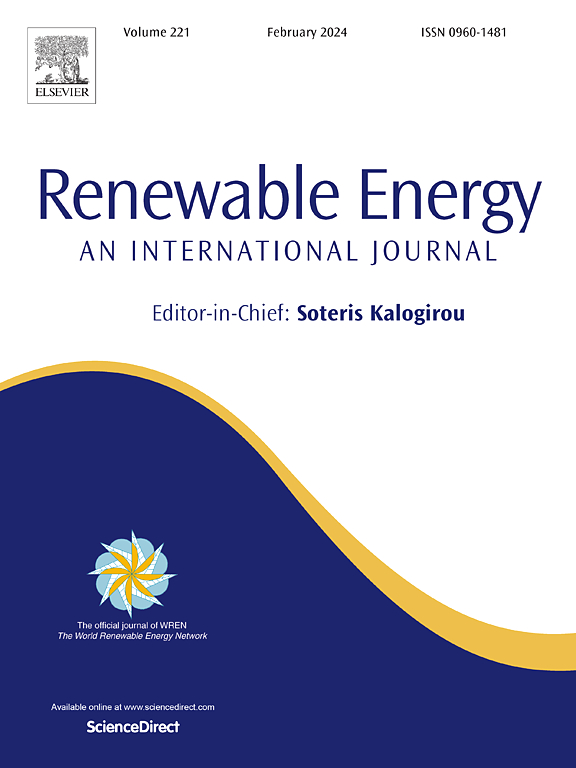提高水柱振荡系统中前缘外体井式水轮机的性能
IF 9.1
1区 工程技术
Q1 ENERGY & FUELS
引用次数: 0
摘要
在振荡水柱(OWC)系统中使用的传统井式涡轮机面临诸如低扭矩产生和有限的工作范围等问题,这降低了它们在波浪能应用中的效率。为了解决这些问题,提高涡轮性能,本文研究了采用椭圆前缘外体(LEEB)作为被动流动控制装置。通过改变LEEB的长度、宽度、高度和相对于涡轮叶片前缘的位置,系统地分析了不同的LEEB设计。利用SolidWorks进行几何建模,利用ANSYS-CFX进行计算流体动力学(CFD)仿真。仿真结果表明,最优椭圆LEEB结构宽度为0.04C,直径为0.016C,距前缘距离为0.08C,与基线模型相比,峰值扭矩系数提高了38%,工作范围提高了22.2%。这些结果证明了椭圆LEEB在延缓流动分离、增强能量传递和提高Wells水轮机运行效率方面的有效性。这项研究强调了LEEB在推进可持续波浪能技术方面的潜力,并为未来在OWC系统中的实施奠定了基础。本文章由计算机程序翻译,如有差异,请以英文原文为准。
Enhancing the performance of Wells turbines with leading-edge external bodies in oscillating water column systems
Conventional Wells turbines used in Oscillating Water Column (OWC) systems face problems like low torque generation and a limited operating range, which reduce their efficiency in wave energy applications. This research investigates the use of an Ellipse Leading-Edge External Body (LEEB) as a passive flow control device to solve these problems and improve turbine performance. Different LEEB designs were analyzed systematically by changing their length, width, height, and position relative to the leading edge of the turbine blade. Geometric modeling was done using SolidWorks, and computational fluid dynamics (CFD) simulations were carried out with ANSYS-CFX. The simulation results revealed that the optimal ellipse LEEB configuration, with a width of 0.04C, a diameter of 0.016C, and a distance of 0.08C from the leading edge, improved the peak torque coefficient by 38 % and extended the operating range by 22.2 % compared to the baseline model. These findings demonstrate the effectiveness of the ellipse LEEB in delaying flow separation, enhancing energy transfer, and expanding the operational efficiency of Wells turbines. This research underscores the potential of LEEB to advance sustainable wave energy technologies and lays a foundation for future implementation in OWC systems.
求助全文
通过发布文献求助,成功后即可免费获取论文全文。
去求助
来源期刊

Renewable Energy
工程技术-能源与燃料
CiteScore
18.40
自引率
9.20%
发文量
1955
审稿时长
6.6 months
期刊介绍:
Renewable Energy journal is dedicated to advancing knowledge and disseminating insights on various topics and technologies within renewable energy systems and components. Our mission is to support researchers, engineers, economists, manufacturers, NGOs, associations, and societies in staying updated on new developments in their respective fields and applying alternative energy solutions to current practices.
As an international, multidisciplinary journal in renewable energy engineering and research, we strive to be a premier peer-reviewed platform and a trusted source of original research and reviews in the field of renewable energy. Join us in our endeavor to drive innovation and progress in sustainable energy solutions.
 求助内容:
求助内容: 应助结果提醒方式:
应助结果提醒方式:


